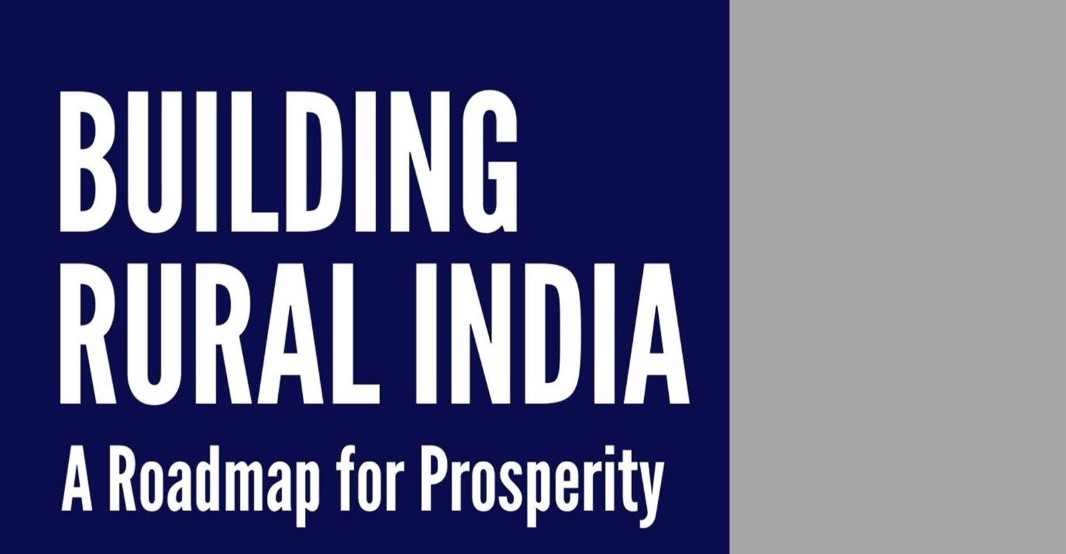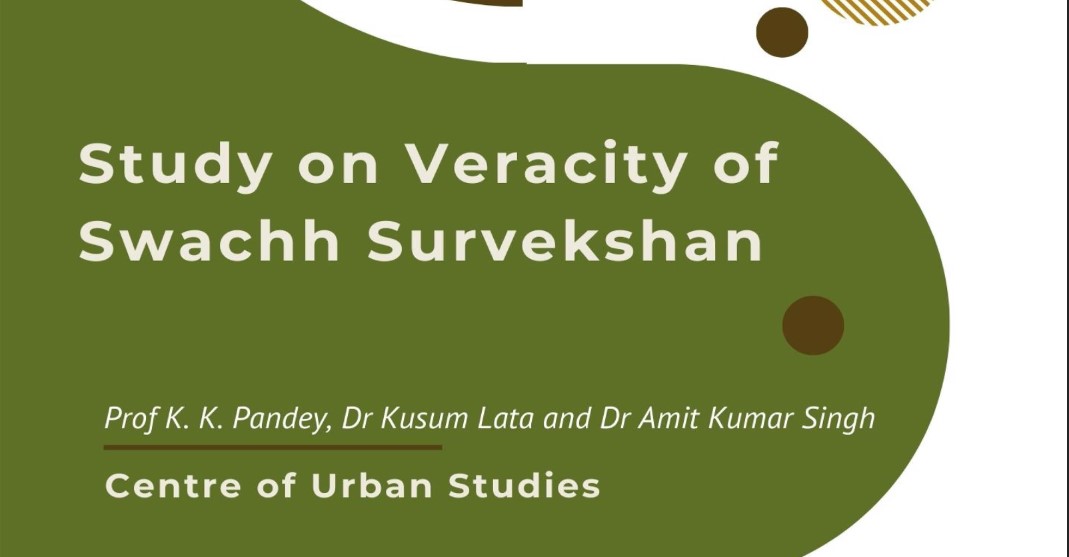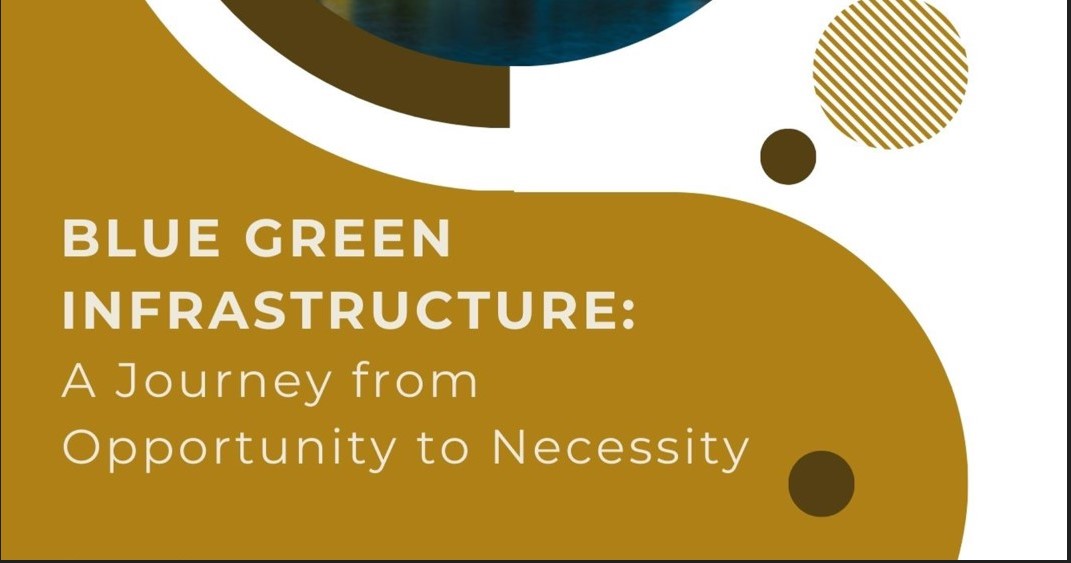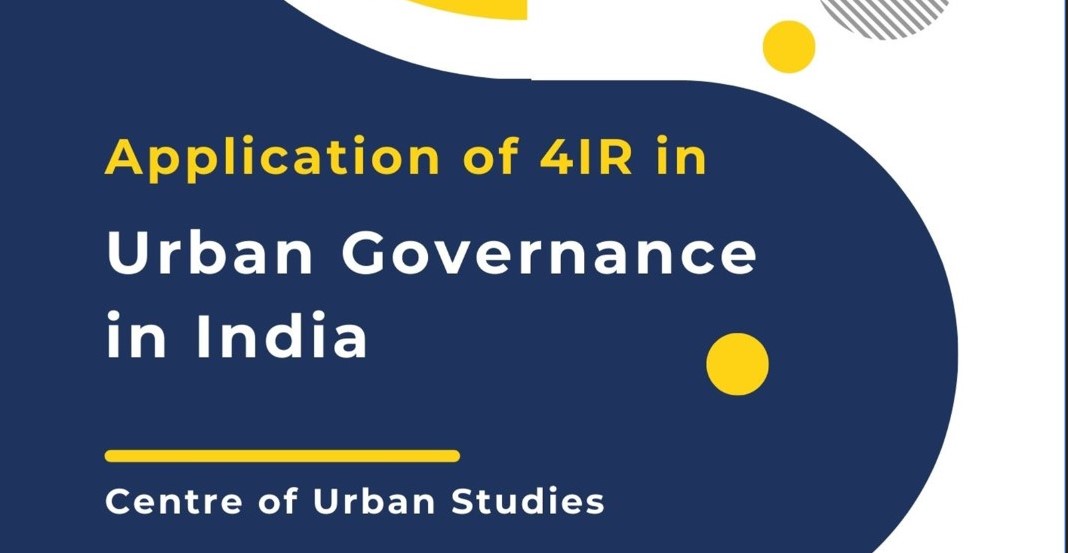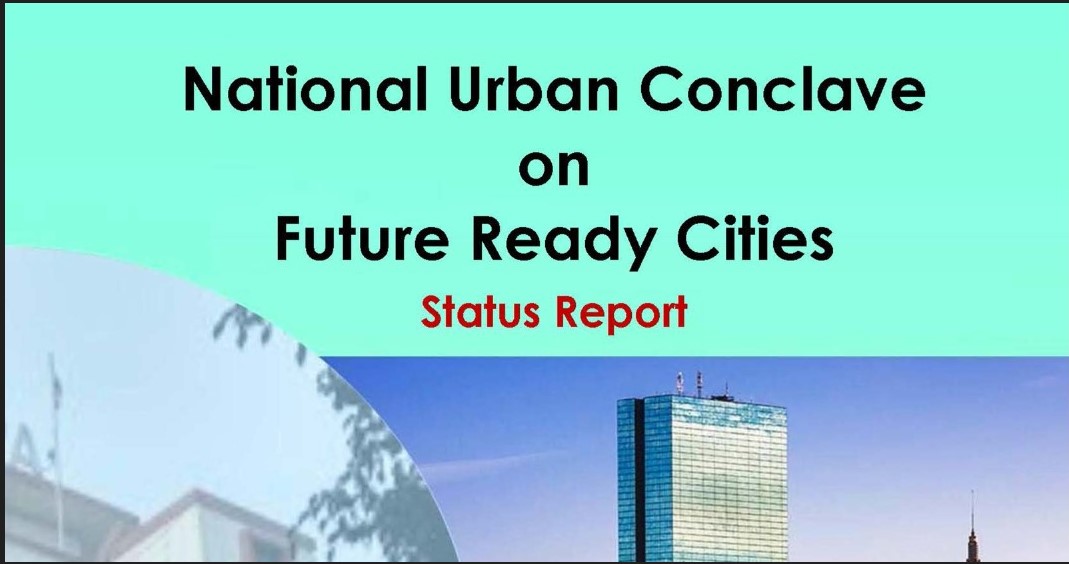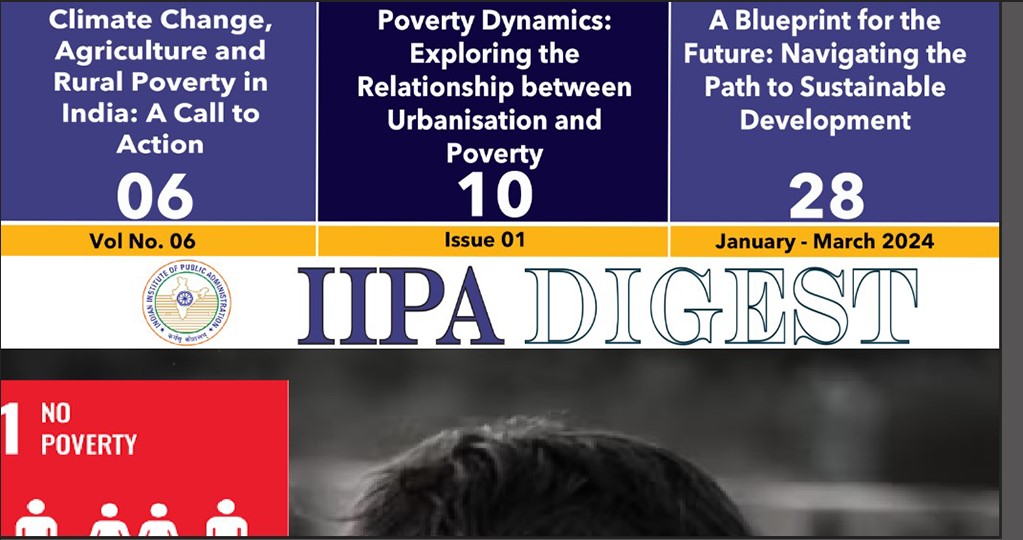Future of Rural Livelihoods Moving Beyond Agriculture
Abstract
The transformation of rural livelihoods is not just an economic imperative but a socio-political one. A rural economy that provides dignified, diversified, and sustainable employment is central to inclusive development. Moving beyond agriculture does not mean abandoning it. Rather, it means building upon it to create a resilient, future-ready rural India by exploring key non-farm rural employment opportunities such as the digital gig economy, rural Business Process Outsourcing (BPOs), rural livelihoods in logistics, green jobs, and agri-tech services. India has a historic opportunity to build this future using the twin engines of digital connectivity and green transition. By investing in people, Institutions, platforms, and partnerships, the country can ensure that its villages become promising opportunities, not distress.
Key Words: Non-Farm Rural Employment, Rural BPOs, Digital Gig Economy, Opportunities in Logistics, Green Jobs, Agri-tech Services, safety net, enabling environment and labour productivity.
Introduction
India, a nation deeply rooted in its villages, has historically seen its rural economy synonymous with agriculture where rural livelihoods has been preponderantly driven by agriculture. The sector deploys 45.5 percent of total workforce in the country, 60 percent of country’s total land area, 83 percent of fresh water, yet it contributes only 15.1 percent of GVA. Implicit in it is that Agri-labour productivity in India is low at 20.5 percent compared to that of non-agriculture. India is net food exporting country after feeding 1.40 billion people, yet farmers income levels have not increased commensurately. This emits strong signals for the need for significant transition in the country’s rural economic structure.
Structural Change in India’s Agrarian Economy
The share of agriculture in India’s GVA has been monotonously declining from 52 percent in 1950-51 to 14.7 percent in 2023-24 (Chart-3.1). This supports Arthur Lewis Hypothesis that share of agriculture in GDP dwindles with economic growth.
Fragmentation of Holdings
Land, an important factor of production, is getting fragmented (Chart-3.2) over the years mainly due to carving out of larger number of nuclear families. The average land holding size has declined from 2.28 hectares in 1970-71 to less than half at 1.08 hectares in 2015-16. This adversely affects profitability of farmers, indicating the necessity for exploring alternative avenues of rural livelihoods.
When LPG reforms were initiated in India in 1990s i.e. reforms were introduced in tertiary and secondary sectors of the economy but kept the primary sector (agriculture) away from those reforms. The fruits of reforms undertaken in tertiary and secondary sectors trickle down to primary sector rather slowly. In an Economy, agriculture lies at the bottom, manufacturing in the middle and services sector at the top. If reforms are like launching the rocket, these ought to have been initiated and fired from the bottom, not from the top.
Chart-3.3: Contrasting Approaches to Reforms, India & China
The Shifting Landscape of Rural India: Trends and Opportunities
India's rural demography has undergone a gradual but notable transformation, reflecting broader national trends of population growth and urbanisation. While India remains predominantly rural, the share of the rural population has steadily declined over the decades.
The past few decades have witnessed significant demographic, social, and economic shifts, laying the groundwork for new livelihood paradigms and highlighting both progress and persistent challenges.
Demographic and Socio-Economic Transitions
The rural population's share in India has decreased from 82.7 percent in 1951 to 68.8% in 2011. Of the total workforce, 72.4 percent resided in rural areas. A steady transition towards urbanization over the years has led to a decline in the rural share in population, workforce and GDP of the country. Although the total population increased 3.35 times between 1951 and 2011, the rural population grew at a slower pace (2.78 times), indicating a relative slowdown in rural population growth and a steady, albeit slow, urbanisation trend. Projections indicate that India will continue to be predominantly rural until at least 2050, after which urban population is estimated to overtake rural population. This demographic reality underscores the enduring importance of rural India in the national development narrative. Rural areas will continue to be home to a large workforce for decades to come, necessitating robust livelihood strategies within these regions.
Socio-economic indicators also reveal a mixed but generally improving picture, reflecting the impact of various development initiatives.
Literacy: Literacy in rural India, though still lagging behind urban areas, has shown impressive growth. In 1951, rural literacy was a mere 12.1%, almost one-third of that of corresponding urban rate. By 2011, it reached 68.9%, significantly narrowing the gap. However, the fact that almost a third of the rural population remains illiterate underscores a persistent challenge that needs to be addressed for equitable livelihood diversification. Further, there exist gender disparity in education, male rural literacy at 80.88% compared to female rural literacy at 64.63% in 2011. This gap needs targeted interventions, as educated women are crucial for family well-being and economic participation in diversified sectors.
Health: Indicators such as crude birth rate, crude death rate, and infant mortality rate have shown consistently declining rural-urban gaps, particularly from 1991 onwards. Life expectancy has also risen significantly over the decades from 32.1 years in 1951 to 67 years in 2011 and projected to be 73.6 years in 2030. This progress in social dimensions of development creates a healthier and potentially more productive workforce, capable of engaging in more demanding and skilled non-farm activities. Improved health outcomes also reduce wage loss, household expenditures on illness, freeing up resources for investment in education or small businesses.
Income and Consumption: Rural income, as a percentage of urban per capita income, has shown a somewhat mixed trend, but with some recovery after 1999-2000. Per capita GDP shows a significant increase from Rs 265 in 1950-51 to Rs 56,971 in 2010-11 and Rs 128,829 in 2020-21 (at current prices). Average monthly per capita household expenditure in rural areas has increased faster than in urban areas after 2011-12, narrowing the consumption disparities. This suggests an improvement in rural purchasing power, which in turn can fuel demand for non-farm goods and services within rural markets, creating local entrepreneurial opportunities.
Poverty Reduction: The poverty lines (monthly per capita consumption expenditure) based on the methodology of the Rangarajan Committee for rural areas are Rs 972 in 2011-12, Rs. 1,837 in 2022-23 and Rs 1,940 in 2023-24. The poverty lines for urban areas are Rs 1,407 in 2011-12, Rs 2,603 in 2022-23 and Rs 2,736 in 2023-24.
Table-3.1: Rural vs. Urban Poverty Line, 2011-12 to 2023-24
Rural poverty is almost halved in a single year during 2023-24 compared to the preceding year. As there does not seem to be any significant change in ‘safety net’ (welfare programmes) ‘GDP growth could be a proximate reason for the decline in poverty in 2023-24’ (Rangarajan (2025).
Nature and Causes of Poverty
The Nature and Causes of Poverty can be broadly classified into two viz. ‘poverty of geographies’ and ‘poverty of households. Poverty of geographies refers to underdeveloped regions lacking infrastructure, services, and economic opportunities, often due to historical neglect or environmental constraints. A cobbler in Rajiv Chowk and Hauz Khas (New Delhi), just as an example, earns Rs. 2650 per day2 compared to Rs 105 per day by his counterpart in Udalguri (North Assam). On the other hand, poverty of households focuses on individual families facing deprivation from food, nutrition, shelter, perpetual poor education, low skill levels, access to health care. While geographic poverty is spatial and systemic, household poverty is personal and immediate. Social exclusion and environmental degradation further compound poverty. These interconnected causes suggest that poverty is not merely economic but rooted in structural and social deficiencies, requiring comprehensive policy interventions for sustainable alleviation. Addressing both requires targeted regional development alongside social protection and empowerment of vulnerable families to break the cycle of deprivation.
Chart-3.4: Causes of Poverty
Rural Inequality
The Gini coefficient, a measure of inequality declined during the period 2011-12 to 2022-23 and from 2022-23 to 2023-24 across geographies of the country. Though inequality ebbed in rural areas too, the decline was a bit slower compared to that in urban areas (Chart-3.5).
The decline in inequality in rural areas was more pronounced with 0.029 points in one single year between 2022-23 and 2023-24 compared to 0.017 points during the 11 year period 2011-12 to 2022-23. In contrast, the corresponding decline for urban areas were 0.030 and 0.049 points respectively.
Structural Transformation of the Rural Economy
Perhaps the most significant and promising shift in the rural landscape is the gradual but undeniable structural transformation of its economy, moving away from overwhelming dependence on agriculture towards a more diversified base. The share of the agriculture sector in the Net Domestic Product (NDP) of rural India sharply declined from 72.4% in 1970-71 to 39% in 2011-12 (Chand (2022)). This sharp reduction in agriculture's contribution to rural output, while still supporting a large workforce, highlights the sector's diminishing capacity to generate high-value employment. Simultaneously, the industrial sector's share in rural NDP more than tripled, rising from 10.6% in 1970-71 to 32.2% in 2011-12. The services sector also saw substantial growth, increasing its share from 17.1% to 28.8% during the same period. This indicates a clear and sustained shift towards non-farm economic activities in rural areas.
A particularly noteworthy feature of this transformation is the emergence of rural India as a manufacturing hub. In 1970-71, rural areas contributed barely a quarter to the total manufacturing NDP. By 2011-12, this share rose to more than half (51.3%), indicating a clear trend towards industrialisation in rural areas. This suggests that manufacturing units are increasingly finding rural locations attractive due to factors like lower land costs, availability of labor, and potentially less stringent regulatory environments compared to congested urban centers.
Recent Reversal of Trends: Increased Rural Workforce and Shift of Economic Activities
A particularly significant and positive development highlighted is the "turnaround" observed in rural employment after 2017-18. Contrary to past trends of declining rural share in total employment, the Periodic Labour Force Survey (PLFS) data shows a substantial increase in the rural workforce. Between 2017-18 and 2022-23, the rural workforce increased at a robust rate of 5.16% per annum, while the urban workforce showed a much smaller increase (0.81%). As a result, the share of rural areas in the total workforce increased from 71.4% in 2017-18 to 75.6% in 2022-23. This suggests a significant shift in the dynamics of India's labor market from urban to rural locations. The underlying reasons for this shift include:
• Availability of Affordable Land: Rural areas offer more affordable land for setting up manufacturing units and other commercial establishments, reducing operational costs for businesses.
• Lower wages: While wages are rising, rural areas still offer a relatively lower cost of labor compared to those in urban centers.
• Government Incentives: Targeted government policies and incentives for industrial development in non-metro areas.
• Improved Infrastructure: Better road connectivity, increasing access to electricity, and expanding digital infrastructure are making rural areas more viable for businesses.
• Reverse Migration and Local Talent: The availability of a local workforce, sometimes augmented by reverse migration of skilled labor from cities, provides a ready talent pool.
This shift presents a tremendous opportunity to raise diversified rural livelihoods, as it indicates a natural economic pull towards rural areas, rather than solely relying on push factors like distress migration.
Emerging Avenues of Non-Farm Rural Livelihoods
The structural transformation of the rural economy of India, as evidenced by the declining share of agriculture in GVA and the increasing contribution of manufacturing and services, signals a critical shift towards non-farm employment. Key emerging avenues within the non-farm sector that hold significant potential for generating diverse and sustainable livelihoods in rural India, leveraging technological advancements and the inherent advantages of rural settings.
Evolution of Rural BPOs and the Rise of Distributed Digital Work
The concept of Business Process Outsourcing (BPO) moving beyond metropolitan hubs to smaller towns and villages has gained traction in India as a viable model for inclusive growth and job creation. Rural India possesses a vast pool of educated youth, many with secondary or higher levels of education, who are eager for employment but are often unwilling or unable to migrate to big cities due to social, cultural, or economic constraints. Rural BPOs provide employment opportunities closer to home, tapping into this underutilized talent and reducing distress migration to overcrowded urban areas.
The BPOs in India initially flourished in metropolitan cities like Bengaluru, Hyderabad, Gurugram, and Pune, leveraging a large pool of graduates and relatively lower labor costs compared to Western countries. These centres benefit from low operational costs, low attrition rates, and the growing digital fluency of rural youth, particularly due to BharatNet and smartphone penetration. RuralShores and DesiCrew are notable examples of organizations tapping into the rural talent pool for digital services such as data entry, content moderation, and customer care. In some BPO centres, many first-generation young women professionals handle backend operations for e-commerce platforms and urban firms. However, their remarkable expansion in the urban centers led to several challenges which included intense competition for talent, resulting in high employee turnover (attrition rates often exceeding 30-40% annually), frequent poaching of staff, and consequently, increased recruitment and training costs for companies. Despite challenges, the success of rural BPOs reveals that untapped potential for digital employment outside urban India does exist.
Many rural BPOs are currently small-scale, limiting their ability to attract larger, long-term contracts from major clients. Marketing and sales efforts can also be challenging for smaller rural entities. Rural BPOs should initially focus on opportunities at the lower end of the value chain, such as voice-based services in regional languages, digitization, and data management, which are highly cost-efficient for them. They can also explore a "network model" of operation, where several small rural centers are networked to function as a larger entity, or act as satellite centers for BPOs located in larger urban centers.
Rural BPOs typically handle a range of services that are less complex or require local language proficiency. These may include Voice-Based Services, Internet Content Monetization, Surveys and Data Collection, Back-Office Operations, Content Moderation and Transcription, Access to Untapped Talent Pool, Lower Attrition Rates. The Government of India has actively supported this decentralization. The "India BPO Promotion Scheme" (IBPS), launched in 2014 under the Digital India program with an outlay of approximately ₹500 crores, specifically aimed to create new employment opportunities in smaller cities and villages. This scheme provided financial incentives upto 50% of capital expenditure to companies setting up BPO/ITeS operations in non-Tier 1 cities, attracting major players like Tata Consultancy Services (TCS) and Amazon to establish operations in remote areas.
Advantages for Rural Areas and Businesses
The establishment of rural BPOs offers a multitude of benefits, creating a win-win situation for both rural communities and the companies involved. These include cost-effectiveness for businesses due to significantly lower operational costs-both fixed cost and variable costs, lower attrition rates lower wages, utility expenses. Besides, these centres act as economic multiplier effect as income generated by rural BPO employees circulates within the local economy, boosting demand for local goods and services. This increased purchasing power stimulates local markets, supports small businesses, and fosters the growth of ancillary services such as local eateries, transportation, housing for employees, creating a positive economic multiplier effect.
With continued strategic investment in infrastructure, focused skill development, and supportive policy frameworks, rural BPOs can significantly contribute to inclusive economic growth in rural India, induce reverse migration, and thus becoming a cornerstone of its diversified livelihood strategy.
Gig Economy and Relevance for Rural India
The gig economy is characterized by short-term contracts, freelance engagements, and task-based work facilitated by online platforms. It encompasses a wide range of flexible work arrangements, where individuals (gig workers) perform specific tasks or projects for clients, often through digital platforms, rather than being traditional full-time employees. Its reach is increasingly extending into rural areas, offering a new paradigm for flexible employment. These tasks can range from micro-tasks that take minutes to complete, to more complex projects requiring specialized skills. For rural India, the digital gig economy offers a unique opportunity to bridge the urban-rural employment divide by providing economic opportunities without requiring physical relocation. It leverages the increasing digital connectivity to connect rural talent with demand for services both nationally and globally. The gig workforce in India was estimated at 7.7 million in 2020-21 and is projected to expand significantly to 23.5 million workers by 2029-303. This exponential growth underscores its potential as a major source of future livelihoods. Platforms like Meesho, ShareChat, Flipkart, and Amazon have enabled rural youth and women to participate in e-commerce, either as delivery partners, resellers, or content creators. In Meesho, just as an example, over 60 percent of its sellers are women from tier 3 towns and rural blocks. They leverage WhatsApp and regional language tools to run small online businesses from their homes. Similarly, rural content creators on YouTube and ShareChat are monetizing local culture and skills for income. A policy framework that includes rural gig workers in E-Shram and other protections is a way forward.
Green Jobs: Rural Sustainability Meets Employment
With India’s climate commitments under the Paris Agreement, rural green jobs are becoming both a necessity and an opportunity. These include employment in solar energy installation, watershed management, organic farming, and agroforestry. The Surya Mitra program, for example, has trained thousands of rural youth in solar panel installation and maintenance, many of whom are now employed in solar parks and rooftop initiatives. Similarly, MGNREGA is increasingly being aligned with green objectives-such as afforestation and water conservation-thereby creating durable assets and employment. According to the ILO, India has the potential to create over 3 million green jobs by 2030, many of which will be in rural areas.
Agri-Tech and Service-Oriented Farming
Agriculture itself is becoming increasingly service-driven. Agri-tech startups such as DeHaat, CropIn, and FASAL are offering AI-based advisory services, input delivery, and post-harvest support. These platforms are employing rural youth as drone operators, crop scouts, agronomic advisors, and logistics staff. Government programs like the Kisan Drone Scheme are promoting drones-as-a-service, where trained rural youth provide spraying and surveillance services to farmers. These initiatives not only create jobs but also make agriculture more efficient and data-driven.
Digital Literacy and Skilling: There is a significant rural-urban divide in ICT (Information and Communication Technology) skills. Only 18.1% of rural youth (15 years and above) were found to be "computer literate" in 2020-21, compared to 39.6% in urban areas. This necessitates intensive foundational and vocational training to make them industry-ready.
Solutions lies in universal digital literacy programs, particularly for educated rural youth, to create a "level playing field" in the digital job market needs to be prioritized. Collaboration between BPOs, vocational training institutes such as ITIs, polytechnics, and government skill development missions (like Skill India Mission, Pradhan Mantri Kaushal Vikas Yojana - PMKVY) is vital to bridge this skill gap. Training should focus on communication skills, basic computer proficiency, data entry accuracy, customer service etiquettes, and domain-specific knowledge relevant to the services offered. "Skill badges" or "skill passports" can help certify competencies.
Enabling Environment and Rural Employment Ecosystem
The importance of state capability and decentralized governance in ensuring the effectiveness of rural development interventions can hardly be over emphasised. Building on that, the following priorities emerge:
i. Strengthen rural digital infrastructure: Ensure internet connectivity, and digital literacy through public-private partnerships.
ii. Integrate and converge programs: Align rural employment schemes (MGNREGA), skilling programs (DDU-GKY), and climate goals (PM-KUSUM) for multi-dimensional impact.
iii. Protect gig and informal workers: Expand the E-Shram portal to include rural gig workers under insurance and pension schemes.
iv. Promote FPOs and SHGs as employers: With support in finance, technology, and marketing, these can become major rural job creators.
Policy coherence across ministries, as well as better use of data and outcome measurement, will be key to realizing these goals.
Government Initiatives and their Impact
The observed progress in rural development and poverty reduction can be significantly attributed to concerted and sustained government efforts over several decades. These initiatives have laid foundational infrastructure, improved social indicators, and directly supported livelihood creation.
i. Connectivity and Infrastructure: The Pradhan Mantri Gram Sadak Yojana (PMGSY) has focused on providing all-weather road connectivity to unconnected rural habitations, addressing a primary structural cause of rural poverty and isolation. Better roads facilitate market access for agricultural produce, enable the movement of goods for non-farm businesses, and improve access to education, healthcare, and other services.
ii. Social Safety Nets and Financial Inclusion: Targeted interventions like the provision of subsidised food grains under the National Food Security Act (NFSA) and free hot cooked meals under PM POSHAN have addressed food security and nutritional needs. Access to clean cooking fuel under Ujjwala Yojana and 100% access to electricity under Saubhagya have improved household energy access. The Jal Jeevan Mission (JJM) aims to provide tap water connections to all rural households, further enhancing public health and reducing the drudgery of water collection. A massive expansion of formal financial services is crucial for formalising economic activities, facilitating digital transactions, and enabling access to credit for rural entrepreneurs and households. India has accomplished this by opening 50 crore new bank accounts under Pradhan Mantri Jan Dhan Yojana (PMJDY).
iii. Skill Development and Entrepreneurship Promotion: The government has initiated various skill development programs under the National Skill Development Mission (NSDM) and Pradhan Mantri Kaushal Vikas Yojana (PMKVY) to enhance the employability of rural youth (skill and entrepreneurship - development for rural India. Programs like the Start-up Village Entrepreneurship Programme (SVEP) and the support to Rural Self-Employment Training Institutes (RSETIs) aim to foster rural entrepreneurship and self-employment. The "lakhpati didis" initiative further exemplifies the focus on empowering women through Self-Help Groups (SHGs) to achieve significant economic milestones.
While these initiatives have made significant progress, persistent challenges such as "leakages" in public spending and the need for enhanced "state capacity", as argued by Muralidharan (2024), needs to be addressed. This underscores that while financial allocation is necessary, the quality and efficiency of programme expenditure, coupled with robust governance, are equally critical for achieving desired outcomes and ensuring the sustainability of these development efforts.
The shifting landscape of rural India, characterised by demographic transitions, structural economic diversification, and the positive impact of government interventions, provides a fertile ground for exploring and expanding non-farm livelihood opportunities.
Strengthening of Institutions: Panchayati Raj Institutions
Decentralization, particularly through the Panchayati Raj Institutions (PRIs), is a cornerstone of rural development and democratic governance in India. A vibrant and dynamic local self-government is a major advantage for rural development. Panchayats play a pivotal role at the grass root level in building capacity of the State.
Chart-3.5: PRIs Functions
Consequent to decentralisation, it was envisioned to make a paradigm shift from ‘top down’ to ‘bottom up’ model of governance to participatory model of development. Though PRIs are doing its best to the extent it can, PRIs in most states are constrained by absence of devolution of 29 functions enumerated in Eleventh Schedule, that PRIs are expected to perform. These functions are related to economic development and social justice and are to be implemented in a way that allows PRIs to act as units of self-government. To improved Service delivery and bring citizen centricity at the center of development agenda in rural India, it is imperative to strengthen PRIs in its true spirit. This can be accomplished by insertion of ‘List IV- subjects under PRIs and Municipalities’ in Schedule VII of Constitution of India, and dismantling of parallel bodies like DRDA.
Chart-3.6: Suggested Insertion of List IV in the Schedule VII of the Constitution of India
Empowering PRIs is not just a democratic ideal; it is a pragmatic necessity for bottom-up planning, effective implementation of livelihood diversification programs, and ensuring that local communities have a genuine say in shaping their own development trajectory. By inserting List IV in the Schedule VII of the Constitution of India, rural governance will be more effective, make them truly institutions of self-government with their own spheres of activity, particularly in local economic development and planning for diversified livelihoods.
Conclusion
The vision for a prosperous rural India, therefore, necessitates a strategic and accelerated shift beyond agriculture. This transformation is not about abandoning farming entirely, but rather about fostering a dynamic ecosystem where agriculture thrives through technological advancements and value addition, while simultaneously, a robust non-farm sector emerges as a primary engine of growth and employment. The roadmap for rural prosperity calls for a multi-faceted approach where government, private sector, civil society, academic institutions, and local communities collaborate to build a vibrant rural ecosystem. To unleash the entrepreneurial potential of rural communities, nine-pronged strategy is required. This would include (i) promoting Rural BPOs, (ii) exploring new frontiers in logistics and supply chain management, green jobs, and agri-tech services which are poised to redefine rural prosperity, (iii) building digital infrastructure like high-speed broadband and uninterrupted power supply, (iv) propagating digital literacy and ICT skills to rural youth through customised vocational training and skilling programs that align with the demands of emerging non-farm sectors, (v) expanding access to microfinance and FinTech solutions in rural areas (vi) investment in physical rural infrastructure such as in all-weather roads, (vii) augmenting education and healthcare facilities in rural India, (viii) promoting rural tourism and finally (ix) Insertion of List IV in the Schedule VII of the Constitution of India will make rural governance more effective. Then, India can move beyond its traditional agricultural dependence to build a truly prosperous, resilient, and equitable rural society, contributing significantly to the nation's overall development journey towards Viksit Bharat@2047.
References
1. Chand Ramesh & Jaspal Singh (2024). India's Rural Economy: Past Trends and Emerging Changes. NITI Aayog.
2. EPW (2024). Special Issue on Review of Rural Affairs, Vol. 59, Issue 43.
3. Government of India (2022). National Logistics Policy.
4. ILO (2023). Green Jobs for Sustainable Development in India.
5. Jugal Mohapatra (2024). Rural Development: The Village in Focus, in CK Mathew (ed.) Viksit Bharat.
6. Muralidharan, Karthik (2024). Accelerating India’s Development: A State-Led Roadmap for Effective Governance.
7. NITI Aayog (2022), ‘India's Booming Gig and Platform Economy: Perspectives and Recommendations on the Future of Work’, New Delhi.
8. NITI Aayog (2024). Concept Note on Rural Livelihoods.
9. PLFS Data (2017–2023). Ministry of Statistics and Programme Implementation.
10. Rangarajan CR and Dev S. Mahendra, ‘Good News in Single digits’ Indian Express, May 29, 2025.
11. Saraswathi C (2023), April 2023, Volume 10, Issue 2, ‘The Role and Challenges of Gig Work Platforms In Indian Economic Development’ - IJRAR.org.
Leave a comment
More articles from Urban & Rural Areas
